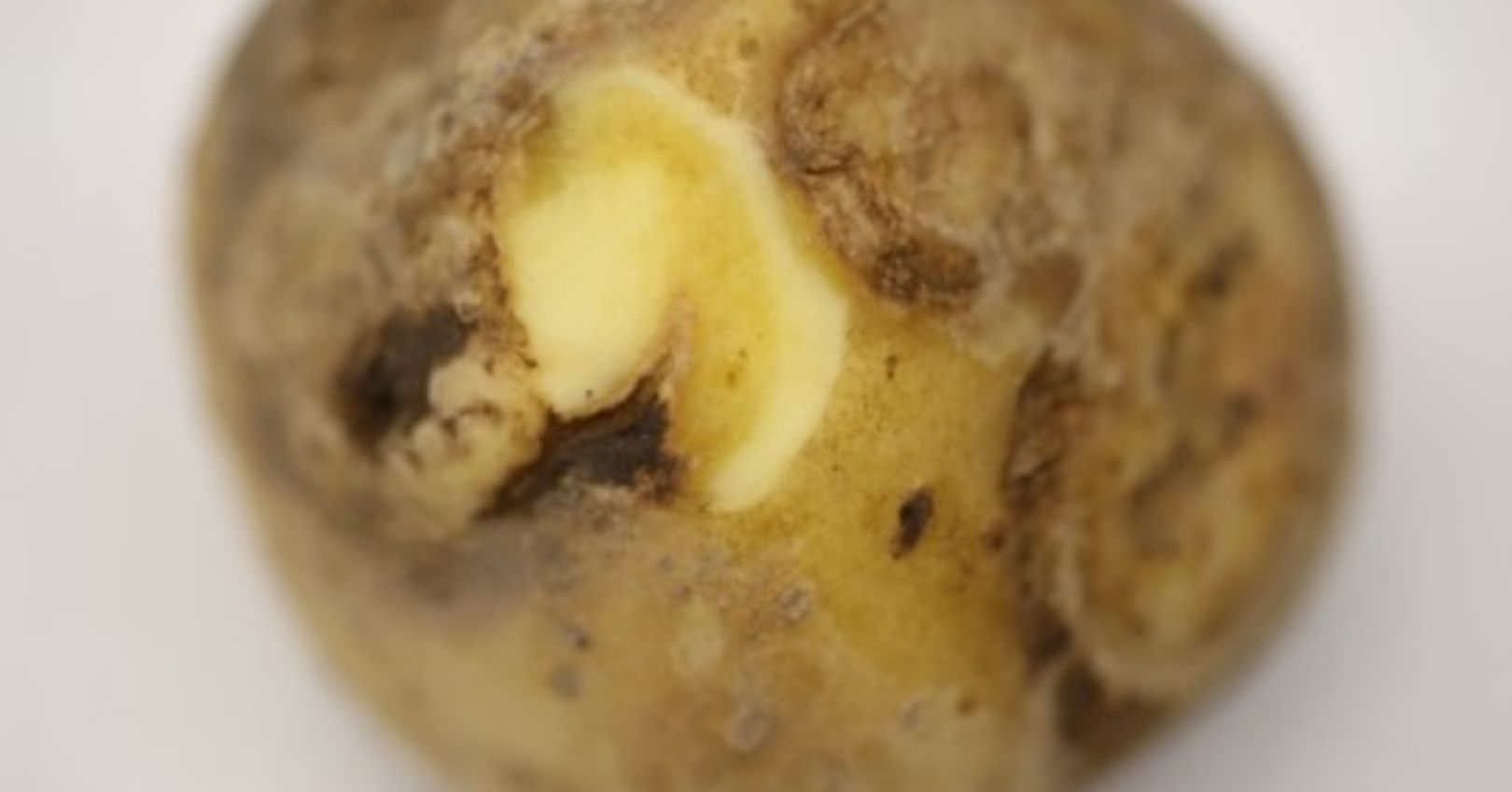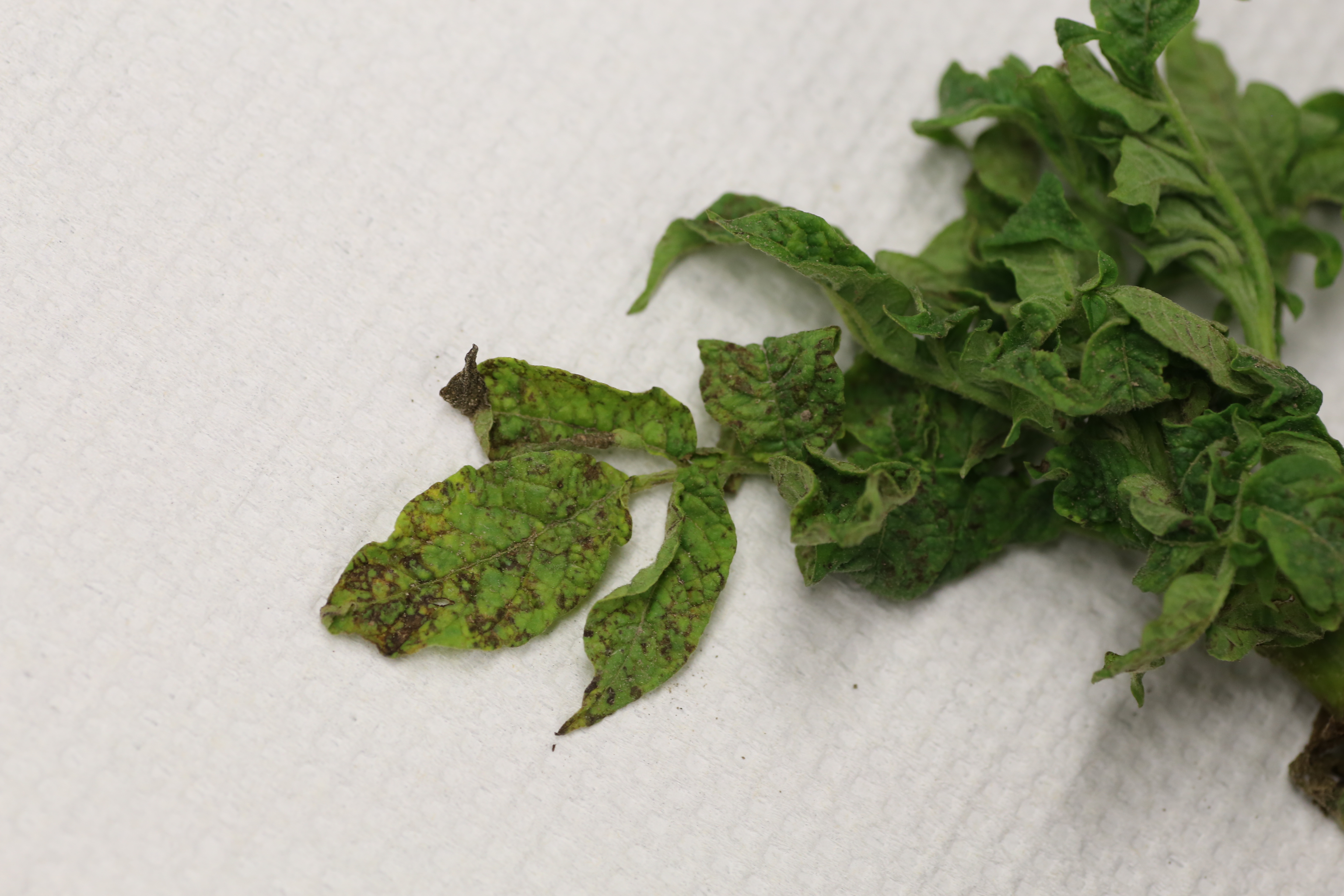Potato Virus Y

Casual Agent
Potato virus Y is in the genus Potyvirus. There are three strains: PVYO, PVYN, and PVYNTN. This virus is transmitted by aphids
Symptoms
Symptoms vary depending on the strain. PVYO causes mosaic symptoms on the leaves and no symptoms on tubers. PYVN causes necrotic spots on leaves and tubers. PVYNTN causes necrotic lesions on leaves and necrotic ringspots on the tuber surface that extend into flesh.
Disease Cycle
The virus is most frequently introduced into a field on infected seed pieces. It can be spread within a field and beyond by aphids and farm equipment. When aphids feed on an infected plant, they can then transmit the virus to a single healthy plant. They have to feed on another infected plant to transmit the virus again. This type of transmission is called “nonpersistent.” The virus overwinters in infected seed pieces and in solanaceous weeds such as nightshade or ground cherry.
Management
There are no resistant potato varieties; however, some are more susceptible than others depending on the strain. For example, Yukon Gold is very susceptible to tuber necrosis. The best option is to use certified seed potatoes. Unfortunately, these potatoes will not be certified as 100% disease-free, and small amounts of PVY may still be introduced. Therefore, scouting for infected plants and removing them from the fields is important for early detection.
Remove alternative hosts by controlling weeds. Since the virus is transmitted in a nonpersistent manner, insecticides used to control aphids will have negligible effects.


